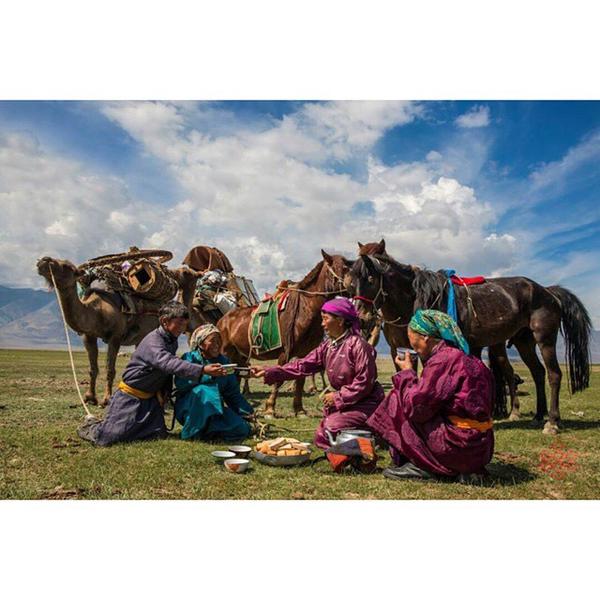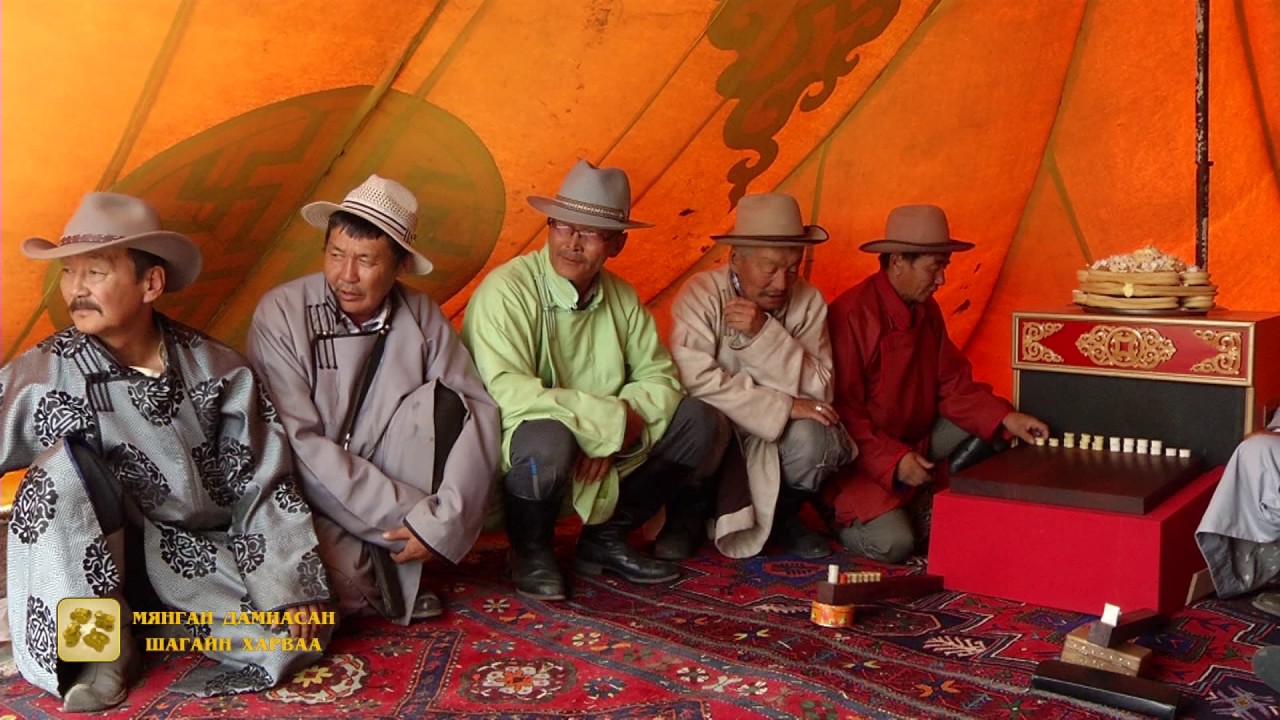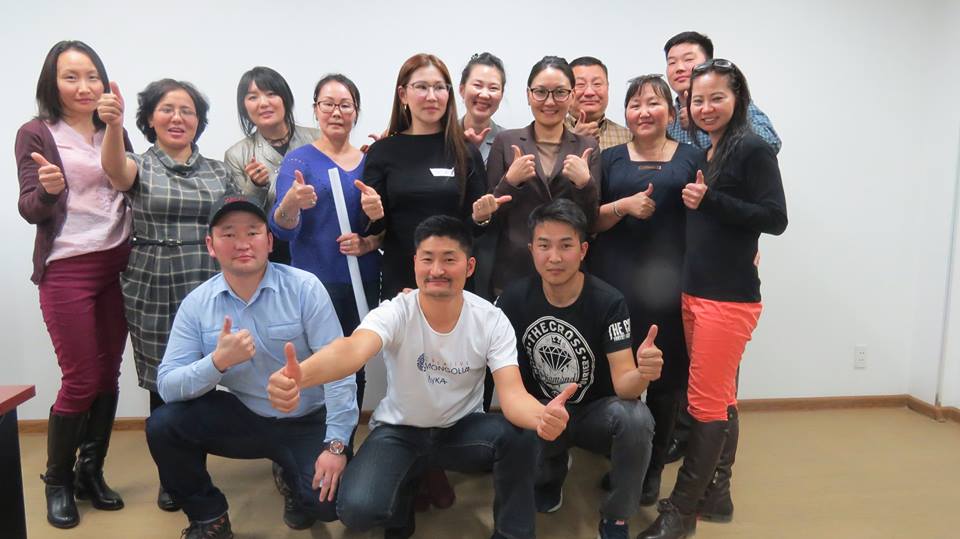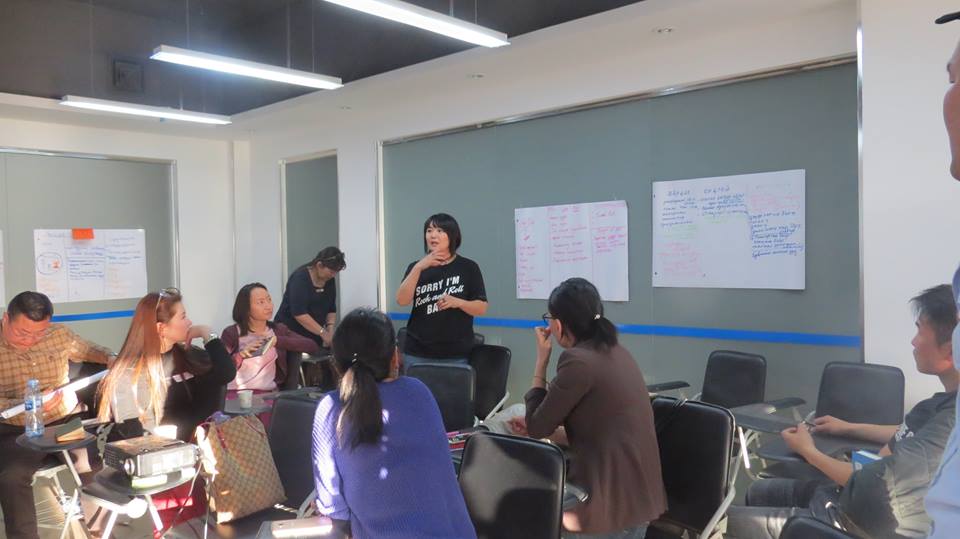About MONGOLIA Welcome to MONGOLIA Amazing Mongolia

I. ERIIN GURWAN NAADAM /THE THREE MANLY SPORTS/
In 2010, the Naadam was enlisted in the UNESCO world heritage list. Modern researchers declared that the Naadam originated from the Khuns (I - II B.C.). During that time the main three foundation for a new government were horse riding, wrestling, and archery. The reason why is that because those are the three main things a man needed to protect the land and their home. For instance, using bow and arrows while riding a horse to take down the enemies, and if it's a melee fight and a man doesn't have a sword, skills to wrestling techniques played a big part. The Naadam was originally celebrated to enhance the skills of the soldiers and to unite the clans. Since then Mongolians continued on celebrating the Naadam.

II. TSAGAAN IDEE (MONGOLIAN TRADITIONAL DAIRY DELIGHTS)
From an early age, Mongolians strictly followed food and dietary restrictions and prevented any illness. Mongolians sustain their bodies with food and drinks that can cure diseases and have long been using food as a medicine. About 2000 years ago, Mongolian great ancestors, the Huns were abundant in milk and airag (fermented mare’s milk) that they fermented milk and used to make huruu aaruul (long dried curd).
Since the beginning, Mongolia has been an agricultural country. Mongolia is the land of organic products since, there are no atomic power plant, no chemical factories, and no air, soil and water pollution.
Mongolia is an “ORGANIC NATION” that have been living in harmony with the nature for a thousand years. Mongolia is abundant in natural fresh organic meat products, dried meat, dairy products, fermented mare’s milk, fermented camel’s milk, dried curd, sour curds, grain, honey, tea, medical plants and fruits. Only with the use of milk, about 200 types of products are made and these milk processed products are called “Tsagaan idee.” Mongolians are able to contribute hugely to the food deficiency, agricultural development, and the climate change problems that the world is facing.

III. NOMADIC CULTURE
The culture of nomadic is in harmony with nature eco-friendly organic lifestyle. For Mongolians, nomadic herders live in animal husbandry and migration live their animals. The animals follow the nature of the animals and feed them up and maintain the characteristics of the factory, nature is an independent culture based on the three-ring tone of people, animals, and nature that retains its state of being and maintains its natural state of resilience. Nomads have contributed greatly to the development of humanity, such as bow, drum, home, and epic poetry, while overcoming extreme harsh conditions in Central Asia.

IV. KNUCKLE- BONE SHOOTING
The Knuckle-bone shooting was created in the thirteenth century, and in the beginning was a royal palace. During the reign of Khublai ankle shot according to the Chinese ancient "Yellow astrology". Later on, the people have been expanding the wisdom of the men. Knuckle-bone was officially held in 2001 as a Mongolian National Naadam Festival. The strike is on the middle of the astrology and the shotgun is called a curb and arrow. It placed on a wooden base to be called a fence and should be cut off at a height of approximately 4.72 m. The ankle man has the ability to take things seriously, to make good decisions and to wait, and the necessity of having them is patience and a sense of feeling. Little by little, uncomfortable sitting piece of arms and a hand sweat on his arm would not look at his shells.

V. ARCHERY
Archery game is contest and celebration of the best archer. Since it is one of the Three Manly Games it is included in the Mongolian National ‘Naadam’ Festival. There are three main categories in Mongolian archery such as Khalkha, Buriat and Urainkhai archeries. Numbers of ball like targets are placed in line and archers shoot certain number of arrows from a far distance, and then hitting scores of archers distinguish a champion. Most ancient form of this game was to precisely shoot the target, which was placed at the maximum of longest shooting distance. This was called as ‘Shooting Metal Arrowhead’. Today archers use non-metal arrowheads for their arrows during the Naadam.

VI. MONGOLIAN CALLIGRAPHY
Mongolian calligraphy is the art of brush expressing the ancient sense of culture, the knowledge, the intellectual education and the silhouette of the human soul. Writing on a brush creates not only the everyday life of a person, also to develops a beauty and beauty education. In Eastern countries, calligraphy is made of art with brush, ink, paper, and frame using artwork and fonts. UNESCO officially registered 24 members of the "Mongolian calligraphy" Committee on the nomination of literary beauties, nominated for the List of Intangible Cultural Heritage required for the Immediate Protection of UNESCO, officially recognized UNESCO as a cultural heritage. The art is in the list fifth most-traded heritage in Mongolia.

VII. THE SECRET HISTORY OF THE MONGOLS
Why “The Secret History of the Mongols”?
· It will give you the inspiration to think on a global scale and the strength to endure difficult times.
· It will provide you with the managerial skills to lead your team or community effectively.
· From ancient times the Mongolian culture has lived in harmony with nature, therefore it will provide you with incentives to reduce the ecological damage facing the world today.
· An opportunity to learn about the “Tengrism”, the first belief of mankind.
· We require Chinggis Khan’s philosophies and strategy for us to create a better world.

VIII. “CHINGGIS KHAN” THE MAN OF THE MILLENNIUM
One of the Great men of world history, Chinggis Khan (1162-1227)
His life was characterised by harsh struggles, many adventures and challenges. He accomplished many feats during his lifetime, most likely more so than any other character in history. Earlier opinion was that he was understood to be a conqueror and destroyer due to the written accounts from the nations that he occupied. However, on the eve of the new millennium this viewpoint has changed dramatically to one where he has been credited with progressing the prosperity of mankind with his sharp mind and contributions to the development of the “modern world”.
Researches have credited his success to various characteristics. He had a remarkable skill in recognising people, a genuine ability to convert enemies to friends. He never forgot a fovour or underestimated the strengths of his colleagues. He honoured intelligence and encouraged innovation as he himself initiated a new era of military strategy. He was the first man to declare and uphold freedom of religion. You could make these discoveries by researching a variety of scripts, however, you would be best served by reading and feeling the primary source called MNT yourself.

IX. MONGOLIAN TRADITIONAL CLOTHES
Mongolian ethnic clothing is an important cultural and cultural significance of our country's meteorological conditions, the status of customary and customary practices, and the historical and cultural characteristics of our country. Hats, deels, belts, and boots, the main agent of Mongolian national costume, have their own symbols. Including: The name Hatah state symbolizes the body of a human being with a tapered cap that is sharp and straightforward. Equal state coat is means the human body was blessed with a central, straight, smoothness. The state of belt means to solidify and break the openings and to disassemble the dispersion. Khans state vest this is the state apparel, because of the guarantee of a citizen, a man and a woman in the state of affairs. The shoes of the state are symbolic of the body of the body, which stands for the support of the people.
Today, Mongolians supply about 1/3 of the world's cashmere. The GOBI, GOYO and HUSUG brands are based on the traditional Mongolian raw materials of wool, cashmere and yak wool.

X. HORSE CULTURE (HORSE, CAMEL RIDING)
65 million years ago the equines with 5 toes were found around Ergeliin Zoo which is located in Dornogovi, Mongolia which is located at the eminence of central Asia and it shows that the horses are originated from Mongolia. Mongolians have been putting horses on their state hymn saying that the string of horses are "light for the ride, fast for racing, the milk is medicine, and are graceful. Without the Mongolian horses it's hard to imagine the Mongolian economy such as wars, transport and carriage, games and promenade, and making airag by fermenting milk.
Mongolian horses have distinct features such as short, able bodied, tough, and fast these qualities helped achieve victory in many wars and it's quite common to see sculptures dedicated to horses in Mongolia. Horses have unbreakable link with the success of world domination of Chingis Khaan
The horse culture consists of the art of scrutinizing and distinguishing, different techniques and technologies to use horses for transportation of man and objects. To start using a horse things such as curb, halter, fetter, lead, saddle, whip, khomuut, cart/carriage and its appliances, scraper, and a brush are used.

XI. YURT
Yurt is a traditional home to the Central Asian nomadic people. Mongolia's home has been around for some 3,000 years now and has become the main necessity of human life today. The best-suited home for a nomadic lifestyle attracts a lot of interest in the structure. Lightweight, compact, durable, architectural solutions are provided with yurt. A note of medieval tourists about the house of a Mongol ger in the thirteenth century shows that "moving cars with a ger are as crowded as cities." The two main categories of designing a permanent necessity apartment in an external form are Mongolian and Turkic. The yurt distinguishes as Khalkha, Oirat, Buryats. A variety of homes from the Mongolian ger for many countries around the world, it is used as a recording studio and travel destination.

XII. MONGOLIAN GAMES
Mongolian traditional games, which have developed for thousands of years, are duly regarded as a highly valuable cultural heritage of our nation. We consider these games as a monumental and intellectual contribution of Mongolians to the history of humanity. There are nearly 3000 games, classified into15 categories, which are inherited down us by our ancestors. For examples, ‘knucklebone games’, ’ board games’, ‘interlocking games’, ‘oral tradition games’, ‘tangle hinge games’, ‘knot tangling games’, ‘puzzle games’, ‘chamabala wheel /magical maze/’, ‘hand gesture games’, ‘knucklebone grabbing games’, ‘calculation games’, ‘folding and scissoring games’, ‘magic and divination’, ‘games on ice’ and ‘the three manly sports’. These games play a significant role in educating and bringing up the children in a playful and joyful way, and hence, they serve as training instruments throughout the entire history of our nation.

XIII. HANDCRAFT ART
Mongolian national handcraft art has a long running history and its products with their varieties and beauties are bearing quite distinctive characteristics as well as magnificent looks. Mongolian national handcraft includes various arts such as sewing and silk embroidery, woodcarving, chiseling, ivory, leather carving, anaglyphy and jeweler and so on. As for materials, natural segments like bone, horn, leather, rope and precious stones are processed in accordance with traditional technology. Generally, handcrafts are embodiments of artists’ highly experienced skills, precise mastership as well as national culture and thoughts.
Felt quilting is the main thing that our ancestors used to use in their household pieces and it was inherited from the Hun era. Nomads have long been partly processing sheep wool to make shoes, clothing items and also an insulation. From the Hun era, felt became handcraft and it was developed to not only to the extent of crafting household pieces but to arts and culture. Felt quitting is an organic product that does not trigger any allergies, dustiness, and it has a long lasting life. Even though, felt crafting exists in many countries, studies have found out that the felt quilting only belongs to Mongolia.
In modern days, felt and sheep wool is used as a building insulation that are also getting exported. In addition, Gobi corporation has started exporting their felt coat to international markets.

XIV. FOLK ART (YAZGUUR)
Traditional national art in any countries becomes a manifestation of the unique appearance, behavior and prosperity of ethnic groups of country. Long song (Urtyn duu), igil (Икел), Horse-head fiddle (Morin Khuur), Biyelgee, Hoomii, Yatga, etc., are the types of Mongolian folk art. The types of Mongolian folk arts are registered in UNESCO, moreover mongolian band called “DOMOG” has won golden cup from World Championship of Folk art.
Biyelgee is originated from the nomads. Biyelgee possesses history of many ethnic groups, traditional, music, myths, national clothes and games festival. Biylgee dance's movements expresses manifestation of ethnic groups life, unique lifestyle, traditional of country. Dancer’s hand and chest movements has improved a lot because biyelgee dances are typically confined to the small space inside the ger. Hand, shoulder and leg movements express aspects of Mongol herders everyday lifestyle, such as: sewing, wrestling, shooting the bow, cooking, customs and traditions, etc.
Amazing Mongolia
WWW.CREATIVEMONGOLIA.COM








